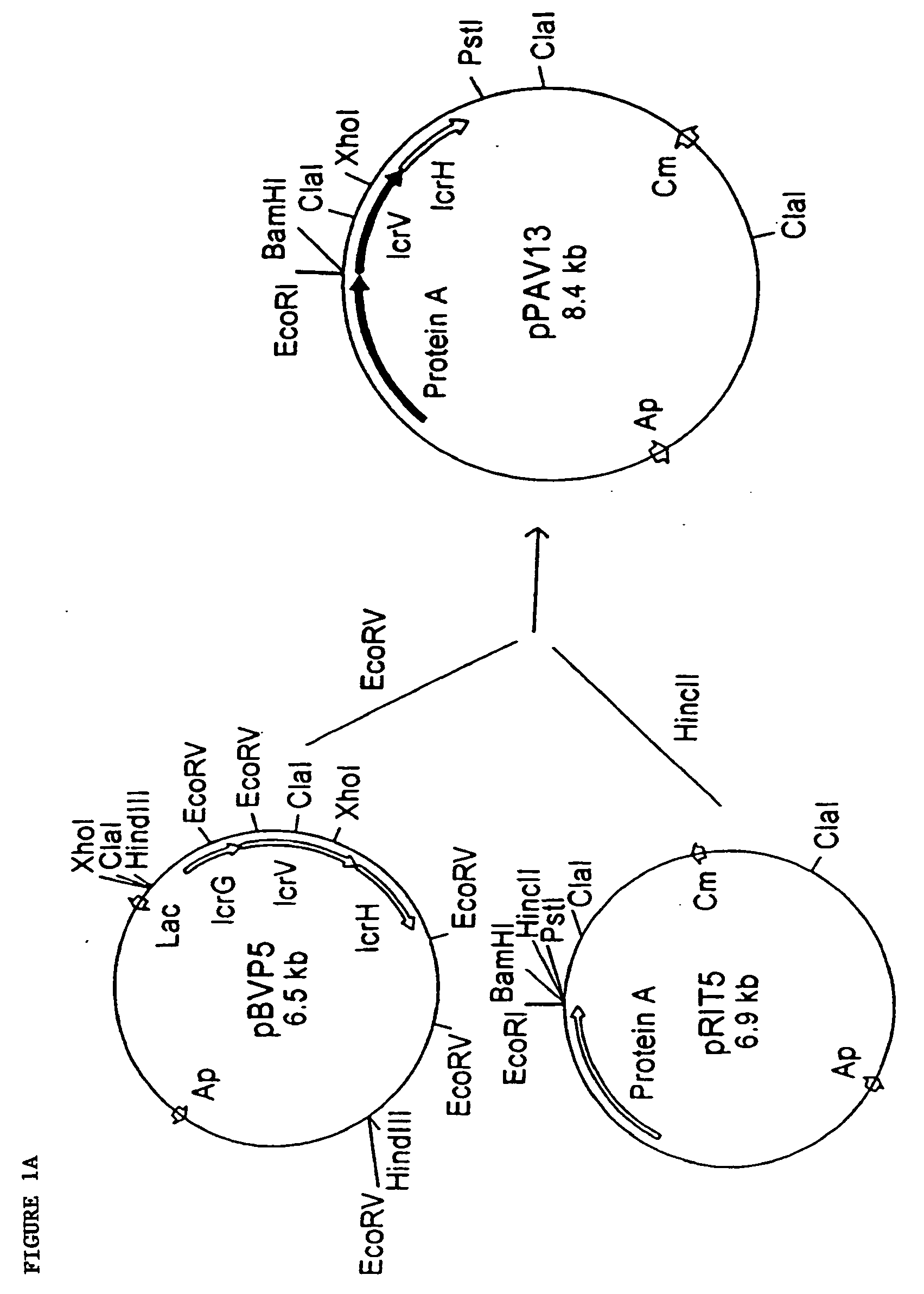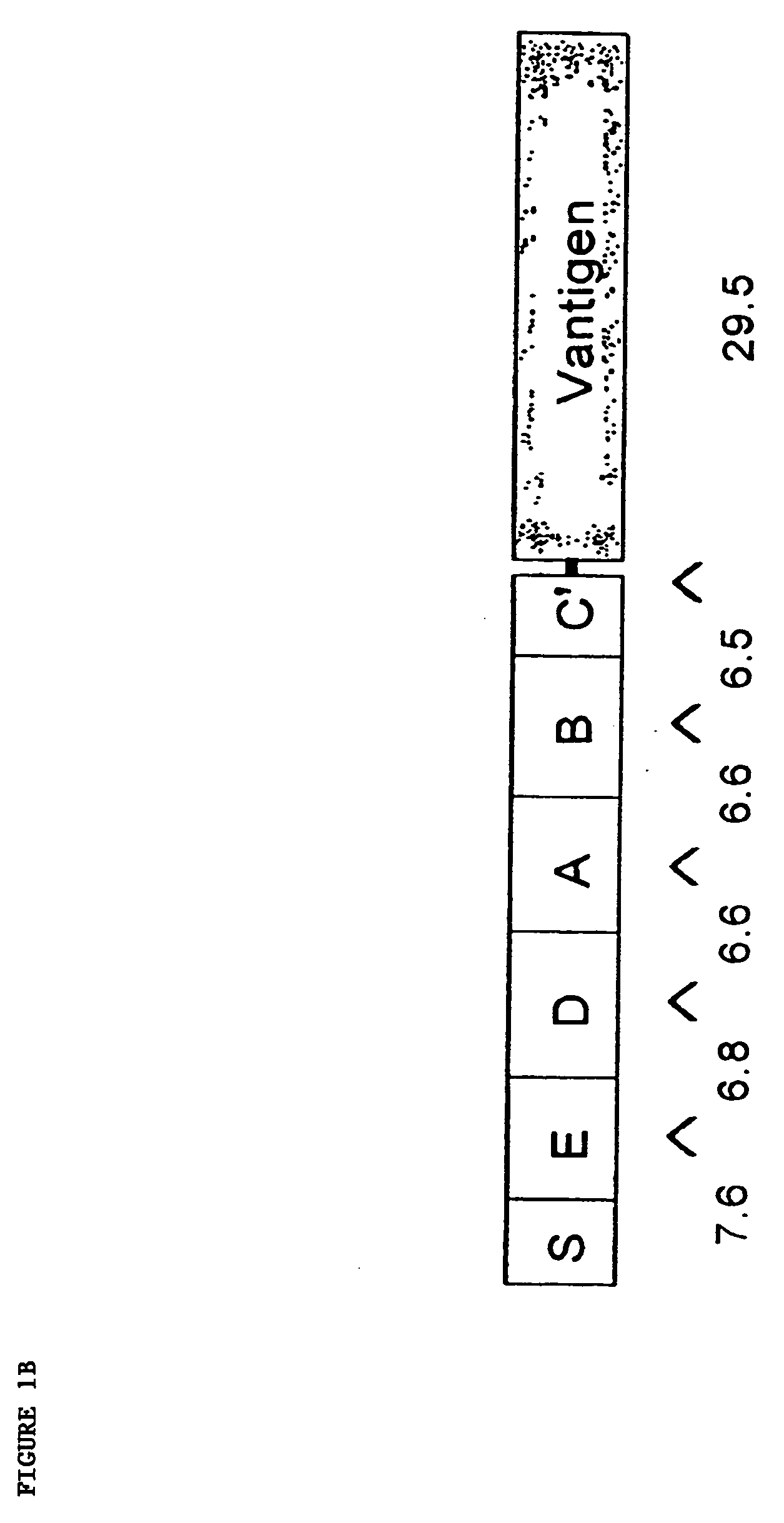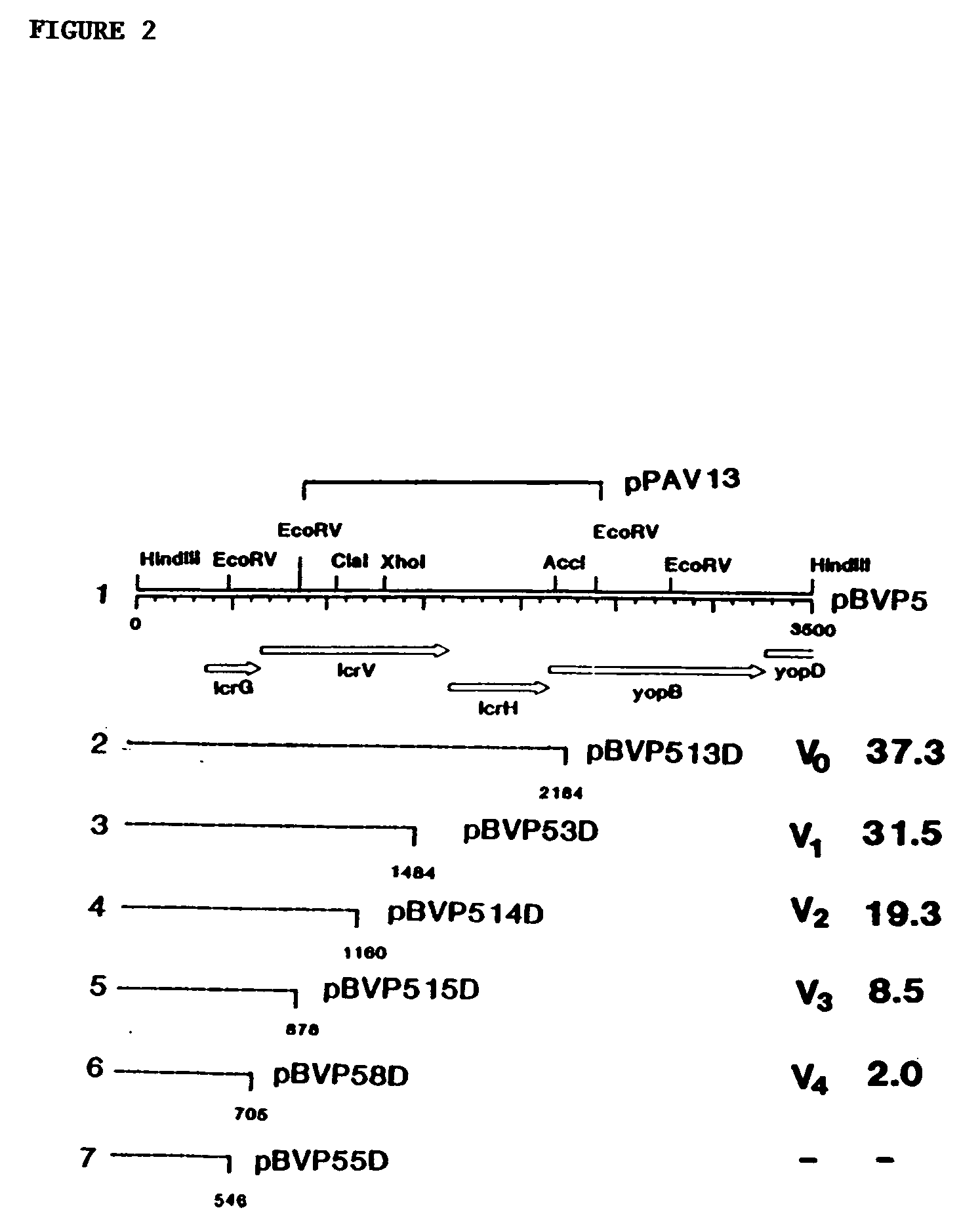Yersinia polypeptide vaccines, antibodies and immunomodulatory proteins
a polypeptide and vaccine technology, applied in the field of yersinia polypeptide vaccines, antibodies and immunomodulatory proteins, can solve the problems of insufficient success in developing a vaccine using only the f1 antigen, destroying entire civilizations, and achieving the effect of passive resistance to yersinia infection
- Summary
- Abstract
- Description
- Claims
- Application Information
AI Technical Summary
Benefits of technology
Problems solved by technology
Method used
Image
Examples
example 1
5.1 Example 1
Passive Immunity to Yersiniae Mediated by Anti-Recombinant V Antigen and Protein A-V Antigen Fusion Peptide
[0208] Summary
[0209] In this example, LcrV of Y. pestis was cloned into protease-deficient Escherichia coli BL21. The resulting recombinant V antigen underwent marked degradation from the C-terminal end during purification, yielding major peptides of 36, 35, 34, and 32 to 29 kDa. Rabbit gamma globulin raised against this mixture of cleavage products provided significant protection against 10 minimum lethal doses of Y. pestis (P<0.01) and Y. pseudotuberculosis (P<0.02). To both stabilize V antigen and facilitate its purification, plasmid pPAV13 was constructed so as to encode a fusion of LcrV and the structural gene for protein A (i.e., all but the first 67 N-terminal amino acids of V antigen plus the signal sequence and immunoglobulin G-binding domains but not the cell wall-associated region of protein A). The resulting fusion peptide, termed PAV, could be purified...
example 2
5.2 Example 2
Binding of Y. pestis LcrV at Dual Sites to TLR-2 and IFN-.gamma.Receptor
[0267] In this example, dual binding sites of Yersiniae LcrV that mediate interaction with host TLR-2 and IFN-.gamma. receptors were identified. As discussed above, LcrV of Yersinia pestis regulates, targets, and mediates type III translocation of cytotoxins into host cells and binds to TLR-2 thereby upregulating anti-inflammatory IL-10; and protective anti-LcrV neutralizes at least one of these functions. This example shows that native LcrV binds TLR-2 at an internal site before associating with the human TLR-2 receptor of monocytes causing prompt upregulation of IL-10 and inhibition of the oxidative burst. These responses were initiated by evident dual binding sites located at the N-terminus (amino acids 32-35) and internally (amino acids 203-206) comprising adjacent glutamic acid residues flanked by hydrophobic amino acids. High affinity attachment as evidenced by Scatchard analysis (characterize...
example 3
5.3 Example 3
Promoting Allograft Retention and Wound Healing
[0303] As demonstrated above, the conserved TLR2 and IFN-.gamma.R-IFN-.gamma.-binding sites of LcrV serve to activate TLR2 and upregulate the major host anti-inflammatory cytokines including interleukin-10 (IL-10) which, in turn, blocks the ability of host nuclear NF-kB to activate transcription of a plethora of inflammatory activities including proinflammatory cytokines. The latter are necessary for activation of phagocytes and formation of protective granulomas that serve to contain invading yersiniae. This observation has relevance to vaccine production because antibodies directed against LcrV block upregulation of IL-10 and thus downregulate proinflammatory cytokines, inhibit formation of protective granulomas, and protect against disease. LcrV from yersiniae actively upregulates IL-10 thus making it a formidable therapeutic agent in certain applications outside where immunosuppression is desirable.
[0304] In order to de...
PUM
| Property | Measurement | Unit |
|---|---|---|
| Ka | aaaaa | aaaaa |
| molecular mass | aaaaa | aaaaa |
| molecular mass | aaaaa | aaaaa |
Abstract
Description
Claims
Application Information
 Login to View More
Login to View More - R&D
- Intellectual Property
- Life Sciences
- Materials
- Tech Scout
- Unparalleled Data Quality
- Higher Quality Content
- 60% Fewer Hallucinations
Browse by: Latest US Patents, China's latest patents, Technical Efficacy Thesaurus, Application Domain, Technology Topic, Popular Technical Reports.
© 2025 PatSnap. All rights reserved.Legal|Privacy policy|Modern Slavery Act Transparency Statement|Sitemap|About US| Contact US: help@patsnap.com



